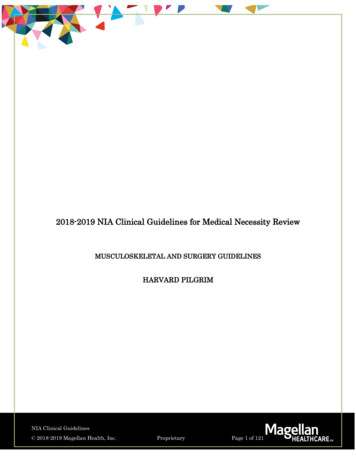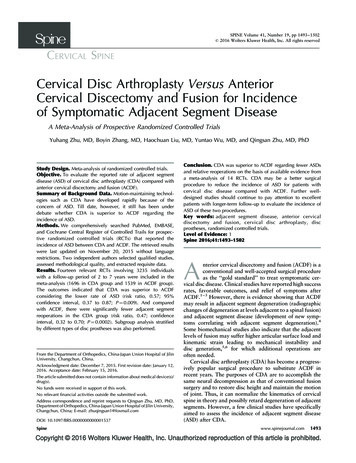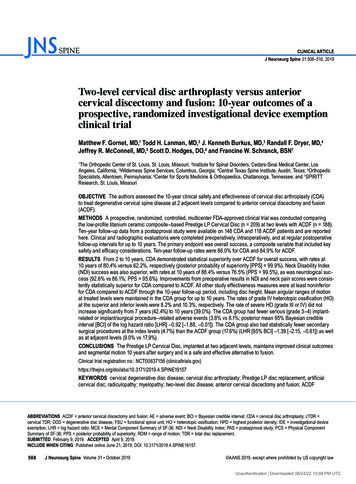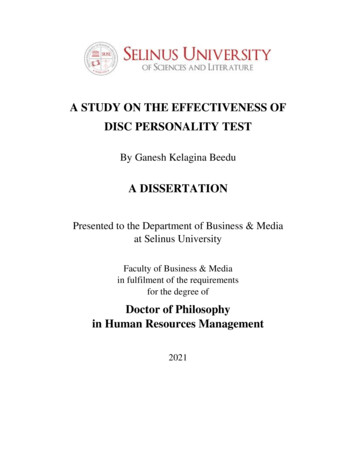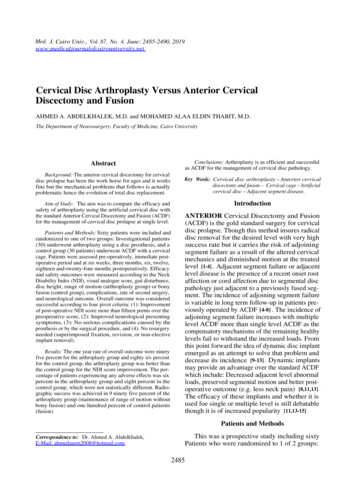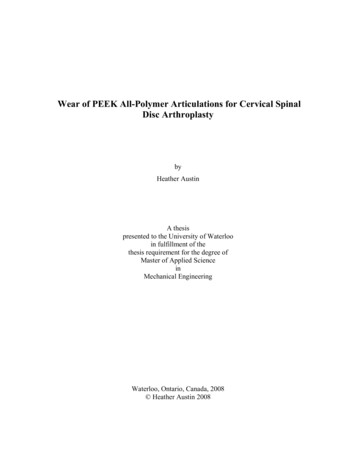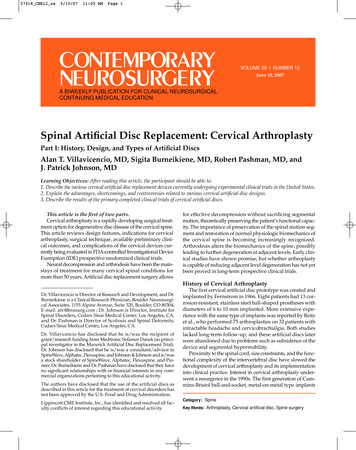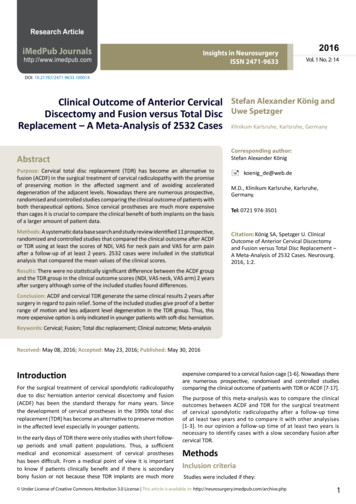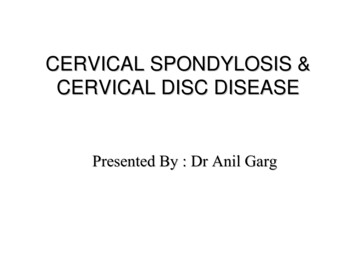
Transcription
CERVICAL SPONDYLOSIS &CERVICAL DISC DISEASEPresented By : Dr Anil Garg
Cervical spondylosis Cervical osteophytosis Most common progressive disease in the agingcervical spine Seen in 95% of the people by 65 years
Pathophysiology Dessication of the disc material and loss ofdisc height Greater stress on the articular cartilage,vertebral end plates and facet joints Loss of normal cervical lordosis andFormation of osteophytes Narrowing of neural foramina and spinal canal Secondary vascular and compressivephenomenon
Mechanical factorsStatic Factors Congenital spinal canal stenosis Disc herniation Vertebral body osteophytes Hypertrophied ligamentum flavum Ossified posterior longitudinal ligamentDynamic Factors Abnormal stresses over spinal column and cordduring normal and abnormal movements andloads
Clinical Presentation Neck pain Cervical Radiculopathy Cervical Myelopathy
Signs and SymptomsRadiculopathy Radicular pain Weakness limited to particular myotome Sensory loss Absent or decreased DTR
Signs and SymptomsMyelopathy Weakness and stiffness of legs, gaitabnormality Numb or clumsy hand Rarely urinary incontinence Central cord syndrome
Differential Diagnosis Amyotropic lateral SclerosisMultiple SclerosisSubacute combined degeneration of cordTumoursSyringomyeliaTabes dorsalis
Radiographic Studies X- RayCT and CT myelographyMRIElectrophysiologic Studies
Medical Management NSAID’sOpoid AnalgesicsMuscle RelaxantsAntidepressantsAnticonvulsantsCervical epidural steroid injection
NonpharmacologicalNonoperative therapy Cervical collar Cervical Traction Physical Therapy– Active isometric exercises– Thermotherpy– Chiropractic manipulation– Ultrasound– TENS
Approach to a patient with neckpain NSAID’s Isometric Neck Exercises Physical therapy Surgery - Fusion
Approach to a patient with cervicalradiculopathy Initially conservative managementSurgery- ventral or dorsalVentral- ACDFDorsal- Laminoforminotomy
Approach to a patient with CSM Nonsurgical Treatementpatient is medically frailMild Static disease Surgical TreatmentProgressive Disease
Surgical options Dorsal decompression Laminectomy laminoplasty Ventral decompression ACDF Corpectomy and Fixation
Cervical spondylosis: Ventral orDorsal surgery Location of the lesionSpecific disease pathologyNumber of vertebral levelsAge at surgeryCurvature of the spine
Complication of Laminectomy PostLaminectomy Kyphosis Instability Postlaminectomy membrane
Ventral procedures for CervicalSpondylosis IndicationsAnterior compression by degenerated disc,OPLL, degenerated vertebral body 3 level disease
Procedures ACDF with or without fusion ACDF with cervical plating Corpectomy with fusion
ACDFIndications Degeneration limited to disc Cervical spondylosis with radiculopathyTechniques Smith-RobinsonClowardBloom and Raney
Bryan Cervical Disc Prosthesis Polyurethane wrapped low friction, waterresistant elastic nucleus located between andarticulating with two titanium alloy surfaces.
Cervical corpectomyAims:– Ventral decompression– Interbody fusion– Plate osteosynthesis
ACDF with Vs without Plating Several RCT’s demonstrated no improvedclinical outcome in patient with ACDF with orwithout plating in patient with single leveldisease In multilevel procedures and unstable spine,there is increased stability and decreased graftmigration following instrumentation
Autograft vs Allograft Clinical efficacy Graft harvest morbidity Cost and availability
Thank you
Bryan Cervical Disc Prosthesis Polyurethane wrapped low friction, water resistant elastic nucleus located between and articulating with two titanium alloy surfaces. Cervical corpectomy Aims: - Ventral decompression - Interbody fusion - Plate osteosynthesis. ACDF with Vs without Plating
